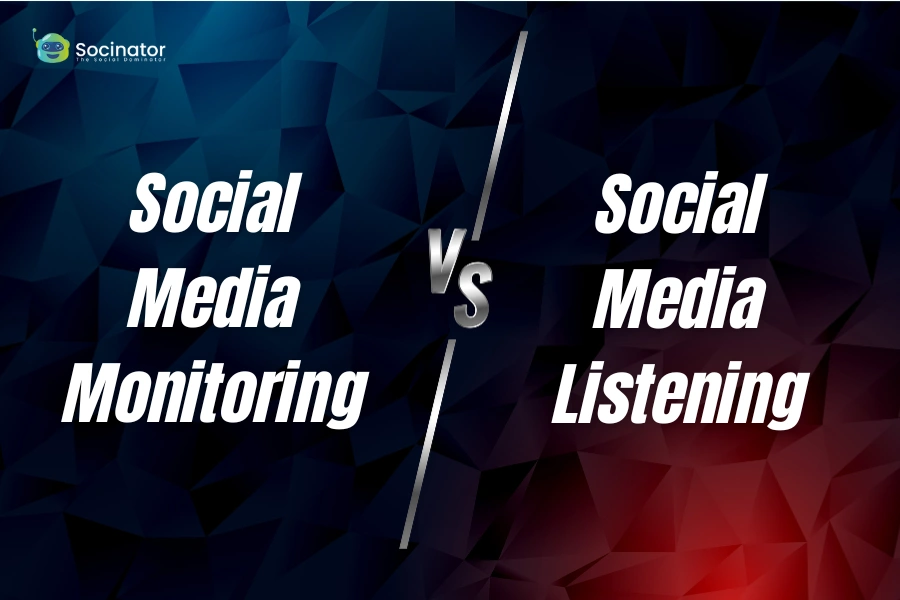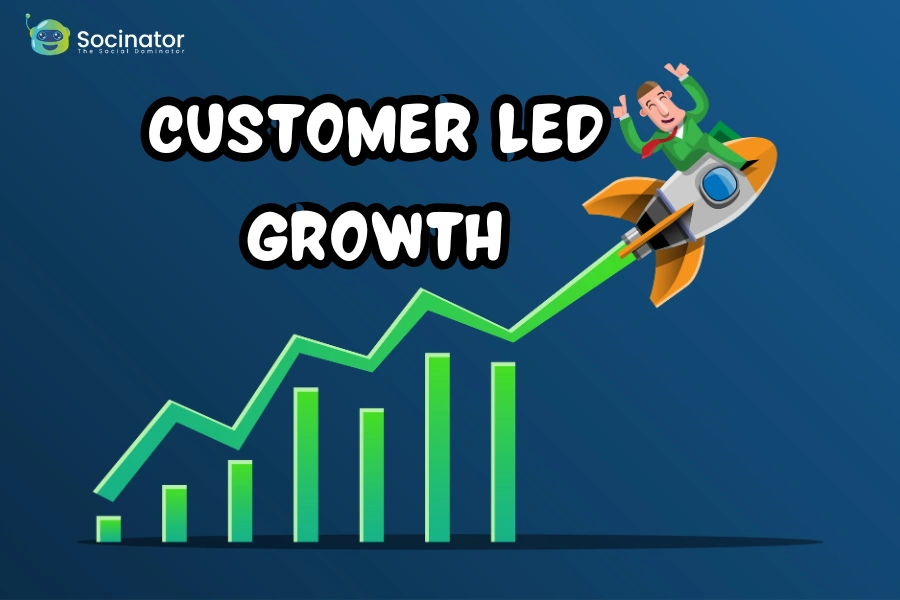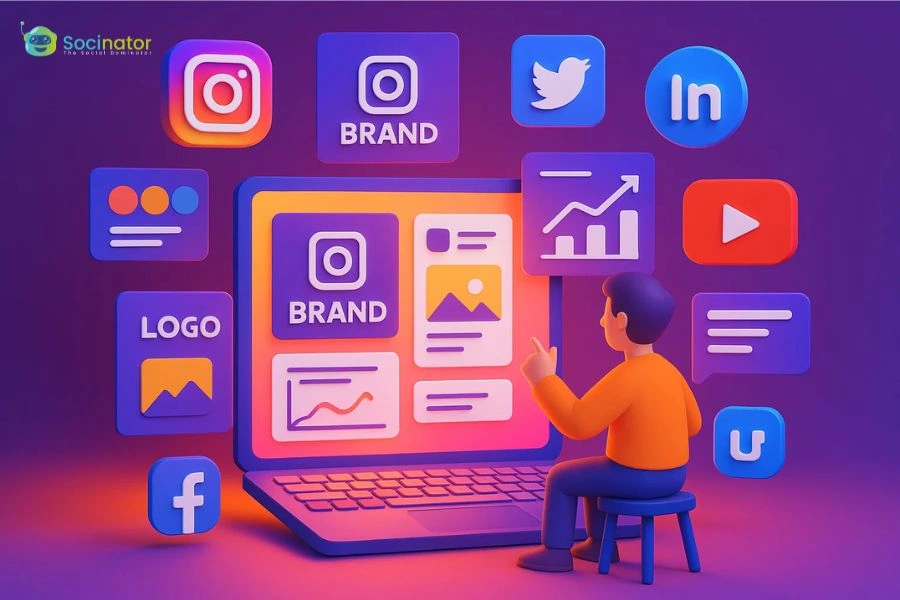Numerous marketers often treat the terms social media listening and social media monitoring as interchangeable while talking about social media vs. listening. It’s a common practice, and many have used them interchangeably.
It is necessary to delineate between social media monitoring vs. listening to enhance your comprehension of the mechanisms to get clarity and propel your business forward.
It’s critical to comprehend what social media listening and monitoring is before learning about their variances.
What Is Social Media Monitoring & Listening?
Social media monitoring means keeping an eye on things like keywords, mentions, and numbers like likes and comments. It’s important for marketers to do this so they can respond quickly and professionally to what people are saying about their brand.
On the other hand, social media listening goes deeper. It’s about understanding the feelings and context behind what people are saying. This helps marketers know not just what’s being said, but how people really feel. Sadly, many people don’t pay enough attention to this part.
Social media monitoring vs. listening distinguishes between quantitative metrics and contextual understanding
So, to sum it up, monitoring is about tracking numbers and responding promptly, while listening is about understanding emotions and context to make better decisions. Both are important for a smart marketing strategy. So, let us learn about it.
Listen To The Podcast Now!
Social Media Monitoring vs. Listening
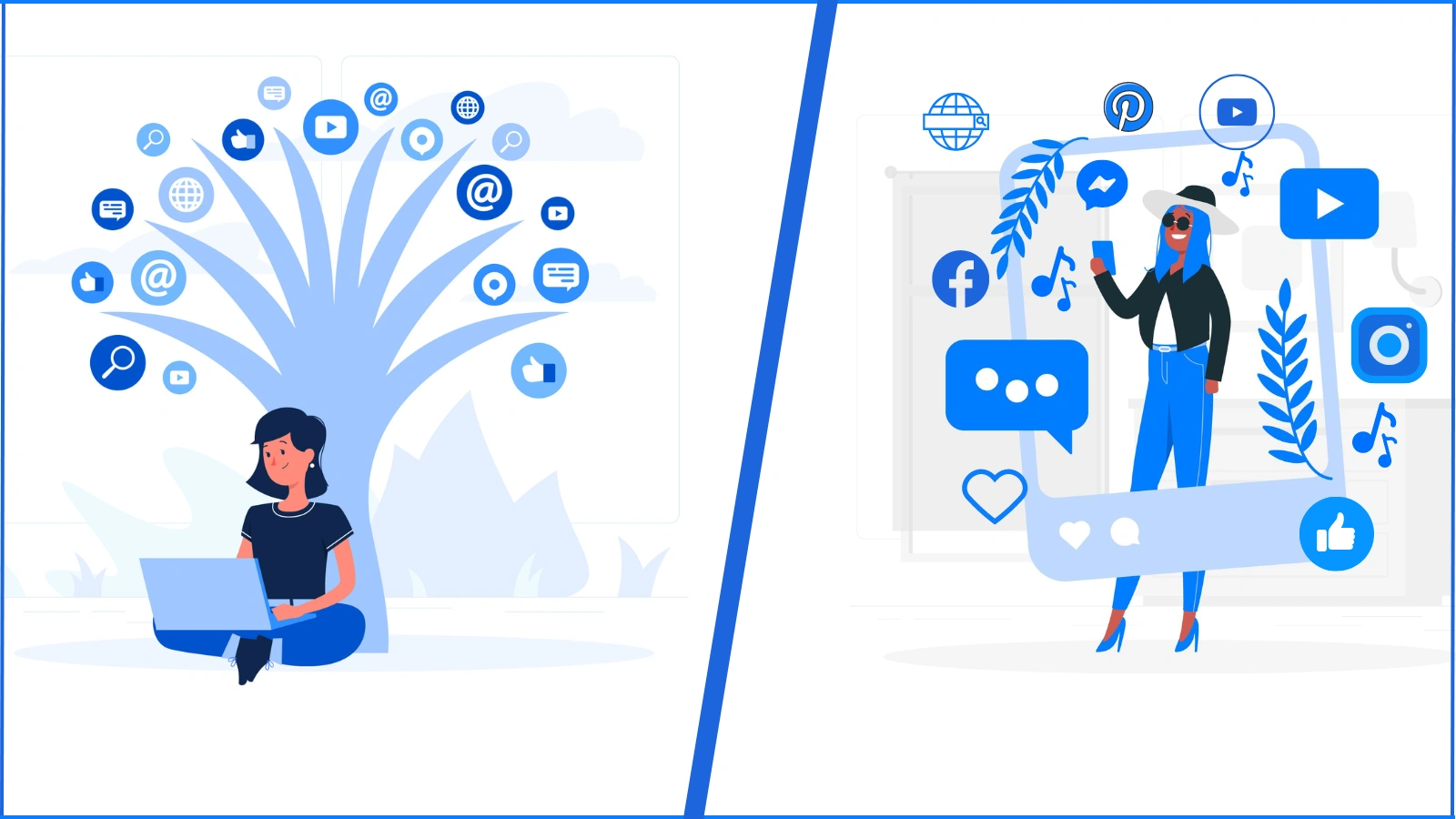 New marketers often confuse social listening and social monitoring, but they are closely linked – social listening relies on social monitoring. Both are necessary to connect with your audience, the buyer persona, and possible customers on social media.
New marketers often confuse social listening and social monitoring, but they are closely linked – social listening relies on social monitoring. Both are necessary to connect with your audience, the buyer persona, and possible customers on social media.
Social media monitoring tracks brand mentions, while social listening understands audience needs for strategic adjustments. Monitoring highlights areas for change, while listening provides in-depth insights into why those changes are necessary.
The following comparisons will help highlight the difference between social media monitoring vs. listening.
Small-Scale Vs Large-Scale:
Social monitoring deals with customer interactions on a smaller scale, addressing inquiries, comments, and issues while managing notifications and connecting customers with call center support.
In contrast, social listening analyzes broader customer sentiments about your brand, utilizing AI or diverse algorithms for audience insights. Social media listening tools compile reports over specific time frames, incorporating data from social media monitoring.
These reports provide marketers with a comprehensive understanding of their audience, aiding in the growth of plans aligned with their needs.
Inactive Vs Engaged:
 One way to distinguish between these two social media strategies is to think of social listening as active and social monitoring as passive.
One way to distinguish between these two social media strategies is to think of social listening as active and social monitoring as passive.
Social media monitoring, characterized as passive, involves observing customer reactions and responding to inquiries without necessarily resolving issues.
In contrast, social listening takes an active stance by interpreting data from social monitoring to formulate audience-centric objectives for your brand.
It emphasizes the distinction between social media monitoring vs. listening.
Wide Focus Vs Limited Focus:
Social listening holds a broader scope compared to the more focused social monitoring. Social monitoring delves into specific elements such as individual brands, customer concerns, campaigns, or product-related queries.
In contrast, social listening takes a more comprehensive approach, covering brand mentions, details about your brand, industry, competitors, and the overall market.
The data obtained from these differing perspectives facilitates a comprehensive understanding of your audience, surpassing even the insights of their therapists.
This insight aids in adapting your brand’s strategy to align with audience preferences.
Responsive Vs Anticipatory:
Social media monitoring focuses on promptly addressing customer inquiries to please clients, prioritizing swift responses even if complete issue resolution is not immediate.
In contrast, social media listening proactively attends to customers’ overall needs, preventing potential issues and effortlessly converting consumer feedback into actionable data.
It highlights the distinction between social media monitoring vs. listening.
Manually-Operated Vs Automatic:
 Regarding implementation time, one social media strategy is manual, while the other is automated. Social media listening requires a listening tool that automates the process.
Regarding implementation time, one social media strategy is manual, while the other is automated. Social media listening requires a listening tool that automates the process.
In contrast, social media monitoring is manual, demanding individual attention to ensure personalized responses for each comment and inquiry.
Demonstrating commitment to addressing requests and listening to problems is challenging but beneficial for building a positive rapport with the audience. It underscores the distinction between social media monitoring vs. listening.
Now that we have differentiated between these two- let us also learn about the importance of them as well.
Importance Of Social Media Monitoring:-
Social media serves as more than just a meeting place; it’s a platform where individuals share their experiences with various products. When discussions arise about your products, understanding whether these experiences were positive or negative becomes crucial.
Social monitoring allows you to address inquiries and concerns efficiently. Even when people discuss your brand without tagging you, a social media monitoring tool like Socinator ensures you stay informed, turning you into a well-informed entity.
Let us now explore the advantages of social monitoring and why it’s integral to incorporate it into your marketing strategy.
Responding To Customer Inquiries:-
 As more shoppers rely on online reviews, ensuring a higher count of positive comments is vital. While no brand is flawless, your audience must perceive your commitment to doing your best.
As more shoppers rely on online reviews, ensuring a higher count of positive comments is vital. While no brand is flawless, your audience must perceive your commitment to doing your best.
Failing to address customer concerns can have lasting consequences. Invest time to respond to customers and find solutions with your customer service team. Effective complaint resolution cultivates a loyal community.
Customers wield the power to shape your brand’s destiny, which can tarnish your campaign or appraise your services. Choose wisely; prevention often outweighs addressing problems later.
Discover The Most Recent Trends:-
By keeping tabs on your brand’s progression on social media, you can stay informed about the current trends in your niche and industry. This insight aids in comprehending users’ primary interests and adjusting your products and services accordingly. This is one of the major differences that exist in social media monitoring vs. listening.
Utilizing a social media monitoring tool like Socinator enables you to identify emerging trends, including when and by whom your products are getting used, potential repurposing, and the factors driving your sales.
This data serves as valuable input for strategic planning, potentially inspiring the development of new offerings.
Also Read:
Social Listening 101: Answer To All Your Key Troubles
Social Media Listening 101: Why Do All Businesses Need It?
Why Tools for Social Media Management
Share The Opinions Of Your Customers Regarding Your Brand:-
Sharing customer feedback with your community is a good idea when your customers appreciate your efforts. It’s not just about solving problems; it’s also important to acknowledge and celebrate positive feedback.
Show others how your customers see your brand—it’s not showing off but thanking them for sharing their experiences.
Responding to both negative and positive feedback helps build a community that feels proud to support your brand.
You can also automate your responses to feedback using an automation tool like Socinator. It eases up your task and reduces doing everything manually.
Let us learn something about this tool and how it can benefit you.
Socinator- The Best Social Media Management Tool
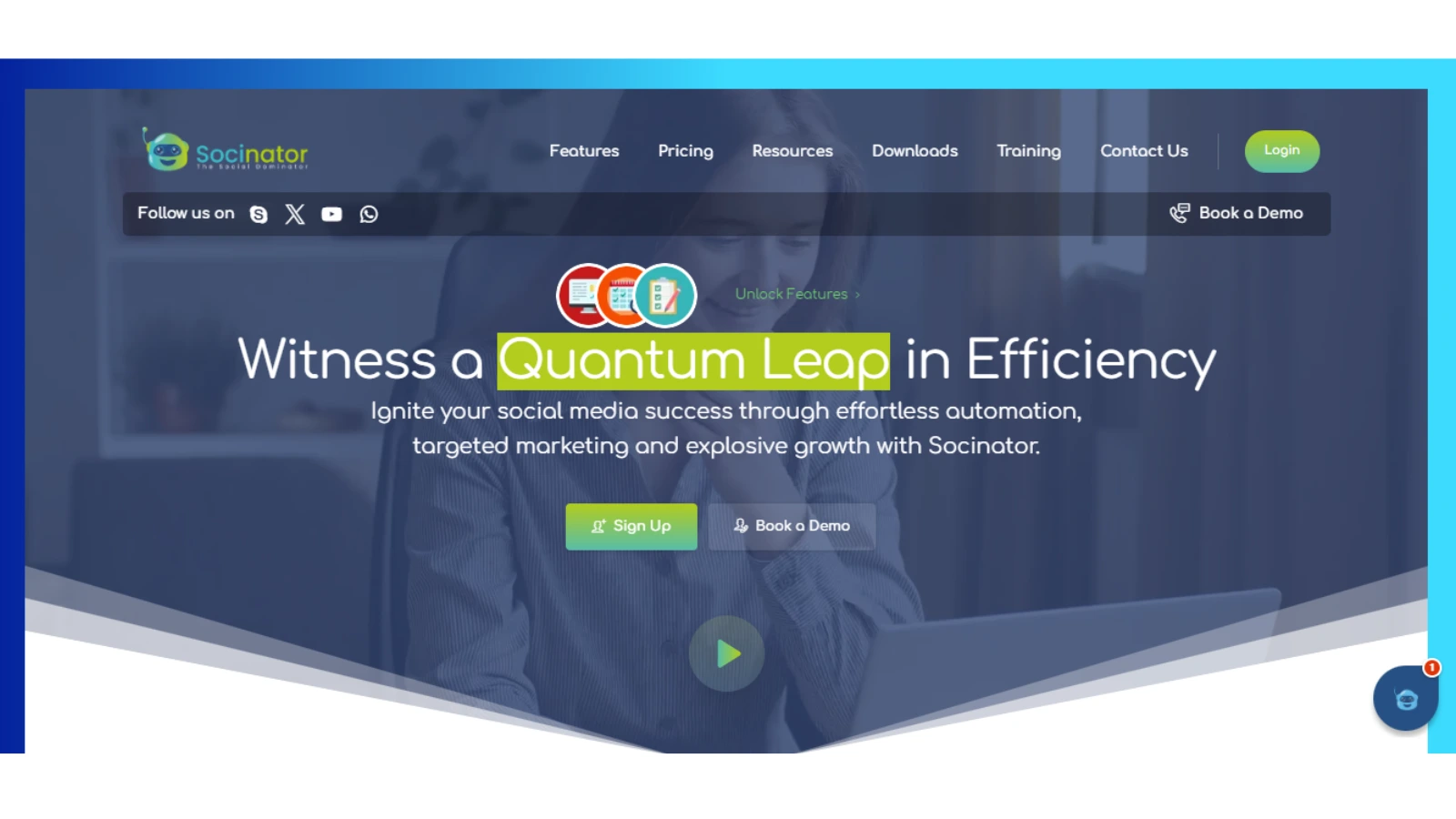 If you’re seeking a simpler method to automate your social media presence, you might consider utilizing tools such as Socinator. It helps you automate your tasks such as posting, scheduling, etc. It lets you set up notifications for social channels like Facebook, Instagram, Twitter, and other social media platforms.
If you’re seeking a simpler method to automate your social media presence, you might consider utilizing tools such as Socinator. It helps you automate your tasks such as posting, scheduling, etc. It lets you set up notifications for social channels like Facebook, Instagram, Twitter, and other social media platforms.
Socinator is one of the best tools for social media management. It lets you schedule and automatically post on different platforms. It even does things like liking, commenting, and following automatically.
Social media monitoring means keeping track of hashtags, keywords and mentions about your brand. This way, you always know what’s happening with your audience and industry.
Some other benefits of using Socinator are:
- Access 9 or more social media platforms from one dashboard
- Strategize, work together and schedule in advance
- Enhance social engagement effortlessly
- Utilize an effective content calendar
- Automate social media posts to save time
It stands out as a dynamic and intelligent tool, aiding marketers in automating social media tasks and quickly analyzing engagement. With all these features, this tool can help you in your social media journey.
Having learned about this tool, let us return to our blog on social media monitoring vs. listening and learn about the importance of social media listening.
Importance Of Social Media Listening:
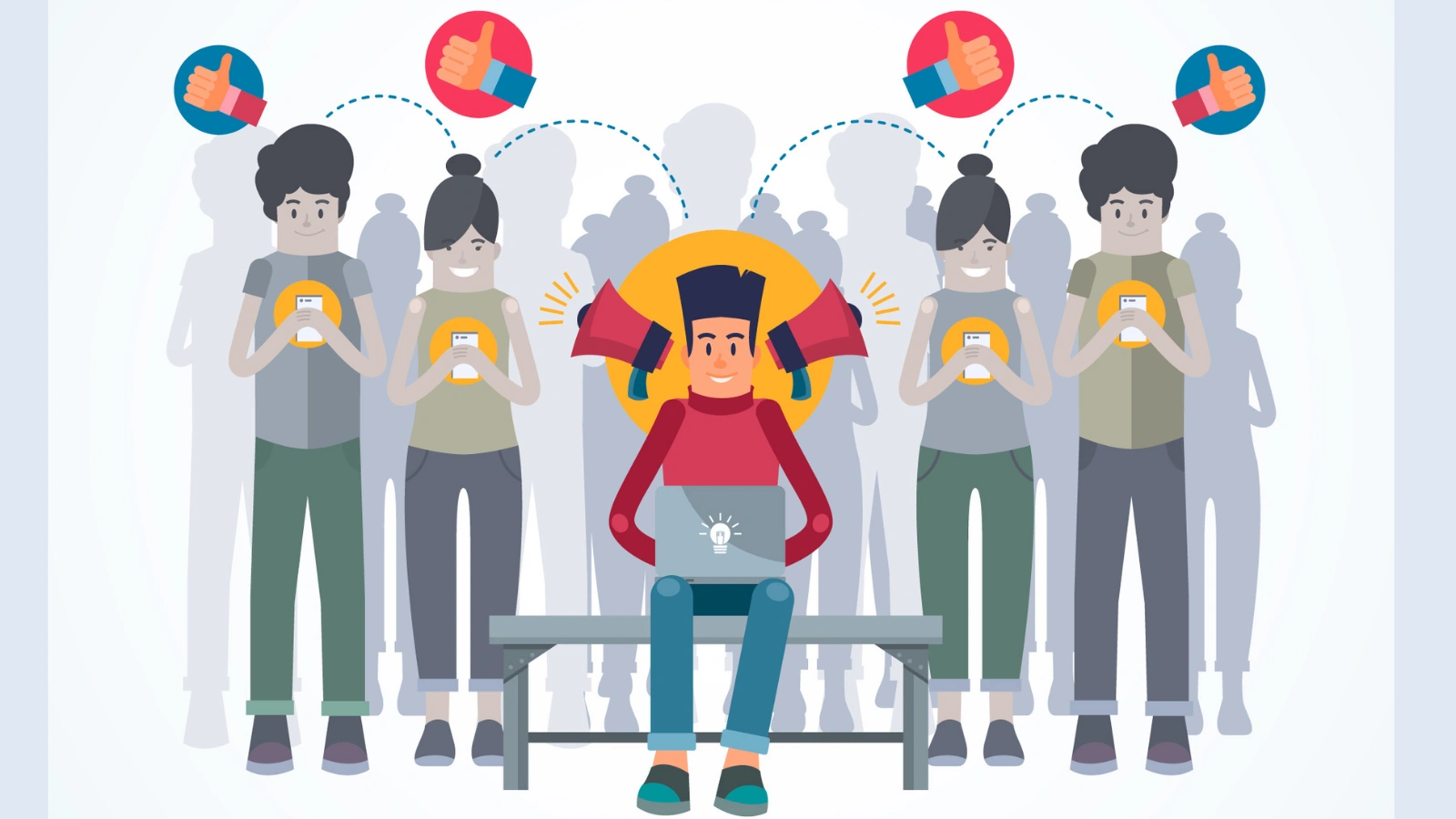 By actively listening on social media, you can keep in touch with your audience and grasp their feelings about your brand. While social monitoring looks at specific details like trees, social listening gives a bigger picture, like a forest.
By actively listening on social media, you can keep in touch with your audience and grasp their feelings about your brand. While social monitoring looks at specific details like trees, social listening gives a bigger picture, like a forest.
Let’s now look at the benefits of using social media listening in simpler terms.
Enhanced Customer Service:
Monitoring customer discussions helps enhance satisfaction by actively engaging and cultivating loyalty. Improving customer service creates a happier audience, reducing negative comments and increasing positive reviews.
When confronted with negativity, handle it skillfully without conflict, expressing a commitment to improvement. This approach leaves your audience pleased that you’re addressing shortcomings gracefully.
Gain Deeper Insights Into Your Audience:
Recognizing that your audience holds significant influence, it’s crucial to exert every effort to fulfill their desires. Your audience has the power to either commend or criticize you on social media and avoiding the latter is essential.
Employing social media listening allows you to identify your community and understand their concerns. If discussions about your brand predominantly occur on Twitter or Instagram, you can strategically concentrate your social media efforts on those platforms.
Identify Your Competitors:
 Beyond knowing what people say about your brand, use keyword tracking to find discussions about your competitors and industry. Learn what people want and what your competitors do well or not. Make improvements in the areas that need improvement.
Beyond knowing what people say about your brand, use keyword tracking to find discussions about your competitors and industry. Learn what people want and what your competitors do well or not. Make improvements in the areas that need improvement.
If competitors have issues, offer alternatives to show you care. It can help to grow your audience with positive comments and reviews.
So these are the differences in social media monitoring vs. listening, along with their benefits.
Concluding Words:
In conclusion, understanding the number of distinctions between social media monitoring vs. listening is vital for a successful marketing strategy. While monitoring focuses on numbers and direct engagement, listening delves into sentiments and broader insights.
Both are crucial for responding to customer needs, managing reputation, and staying ahead in the competitive social landscape. Utilizing tools like Socinator for monitoring and listening enhances efficiency and helps businesses connect meaningfully with their audience.
Striking a balance between social media monitoring and listening is the key to a comprehensive and effective online presence.

